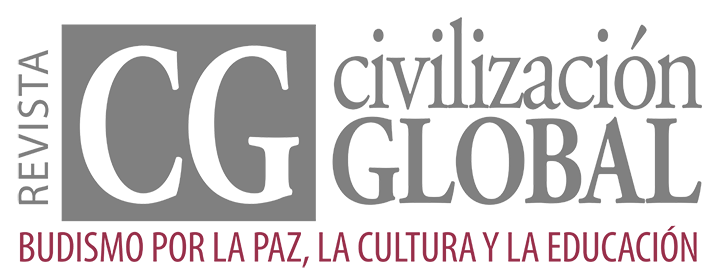Resources for the introduction of Soka Gakkai Spain’s discussion meetings
Now Nichiren and his followers are encouraging others to adopt Nam-myoho-renge-kyo and to make it their own practice.
↳ OTT, page 110. The Orally Transmitted Teachings are a compilation of Nichiren Daishonin’s oral teachings of the Lotus Sutra taught during his years at Mount Minobu where he established himself in May 1274 until the 8th September 1282, just a few weeks before he died. These teachings were registered and compiled in two volumes by his disciple and successor Nikko Shonin.
(In the ‘Encouraging Devotion’ chapter of the Lotus Sutra), the voice-hearers (…) make a vow. They declare that in the evil latter age after the Buddha’s passing, they will preach the Lotus Sutra in other lands, because the minds of people in this saha world are confused and deluded. The sutra describes the saha world as filled with beings who have few good roots, are arrogant, muddled, wrathful, fawning, and devious.
.
In this way, it depicts how difficult it is to realize kosen-rufu in that evil age. The sutra’s conclusion—revealed later—is that the protagonists who take on the task of spreading the correct teaching in the Latter Day are none other than the Bodhisattvas of the Earth.
.
Put another way, only with a grassroots network of people awakened to their mission as Bodhisattvas of the Earth, people ready to dive into this defiled world in accord with their original vow.
.
(…) No bodhisattva or Buddha takes the easy way out. Bodhisattvas actively go to the most challenging places, and that is why their noble lives shine with the light of Buddhahood.
.
That is the reason for the Daishonin’s words ‘Now Nichiren and his followers are encouraging others to adopt [or embrace] Nam-myoho-renge-kyo and to make it their own practice’ (OTT, 110). Our practice is to courageously reach out to others and leap in among the people to share Buddhism.
.
Today, we of the Soka Gakkai alone have steadfastly engaged in this practice of ‘encouraging devotion’ while experiencing all kinds of hardships and adversity. Chanting and teaching others about Nam-myoho-renge-kyo for our own and others’ happiness is our noble mission as Soka Gakkai members directly connected to Nichiren Daishonin.[1]
Each person is unique and for that reason it is difficult to make a generalization. However, it doesn’t seem risky to state that in general people do not start practising Buddhism with the wish to face difficulties. In fact, they usually do so hoping to expand their capacity to deal with the problems they already have. In many cases, they overcome them, and, after experiencing the benefit of the practise, they discover that this hope was not unfounded.
.
The understanding of some of the statements just quoted, just like the one that says that “Bodhisattvas actively go to the most challenging places, and that is why their noble lives shine with the light of Buddhahood,” usually comes later as a result of the wish to deepen the faith towards which one has started to feel gratitude and seeking spirit. However, even though this understanding requires faith, it does not go against reason, quite the opposite, it enriches it.
.
In this sense, in the study lecture from which the passage from The Orally Transmitted Teachings and Daisaku Ikeda’s commentary have been taken from, we find the following explanation of Nichiren Daishonin’s statement which says that “‘the wise will rejoice’ on encountering difficulties”[2] and which challenges our natural tendency to follow the easiest path: “When we selflessly dedicate ourselves to spreading the Mystic Law, the negative functions residing in our beings and lurking in the dark depths of society are driven out of hiding. We purposely call them forth so that we can conquer them, and in the process make our inner Buddhahood shine all the brighter.”[3] In another writing, the Daishonin illustrates this with an insightful comparison: “This is like the case of a peasant heavily in debt to the steward of his village and to other authorities. As long as he remains in his village or district, rather than mercilessly hounding him, they are likely to defer his debts from one year to the next. But when he tries to leave, they rush over and demand that he repay everything at once [and so he will be free of it by repaying it entirely].”[4]

This Soka Gakkai Spain’s group from Valladolid takes the name of an important chapter of The New Human Revolution. This image from a recent meeting, which overflows with vitality and youthfulness conveys that the participants live up to its name. Congratulations!
Mailbox: prensa@ediciones-civilizacionglobal.com
[1] ↑ See section «Estudio» (2/3) of this issue.
[2] ↑ The Three Obstacles and Four Devils, in WND-1, page 637.
[3] ↑ See section «Estudio» (1/3) of this issue.
[4] ↑ Letter from Sado, in WND-1, page 305.

